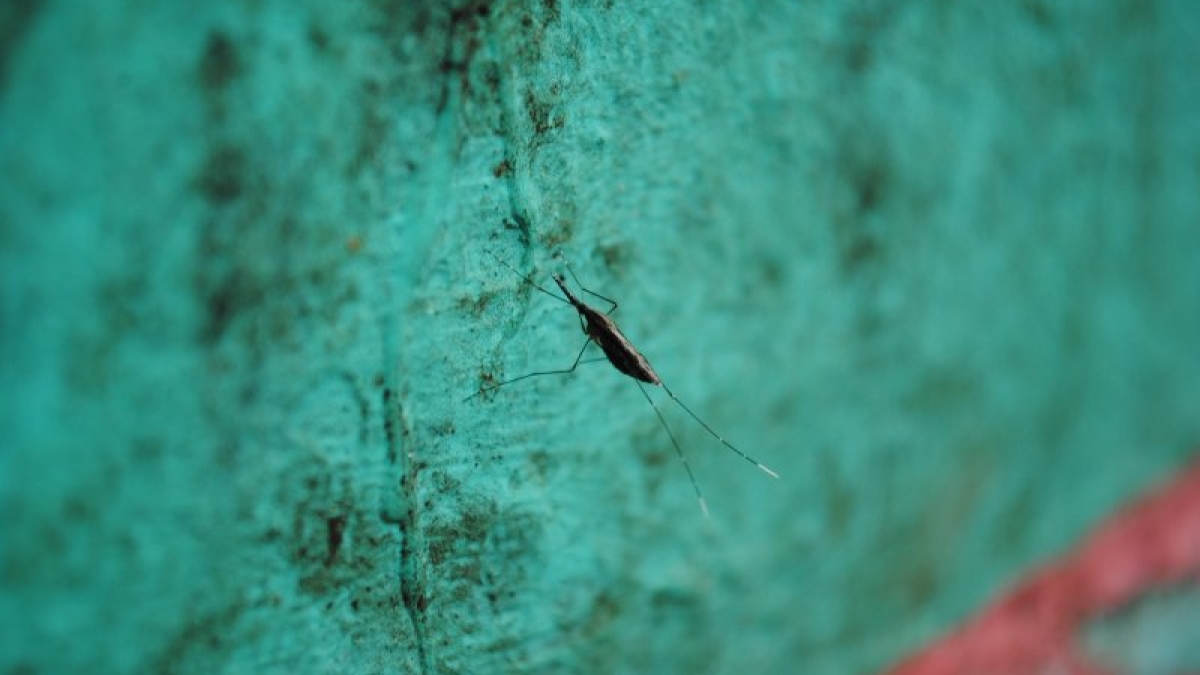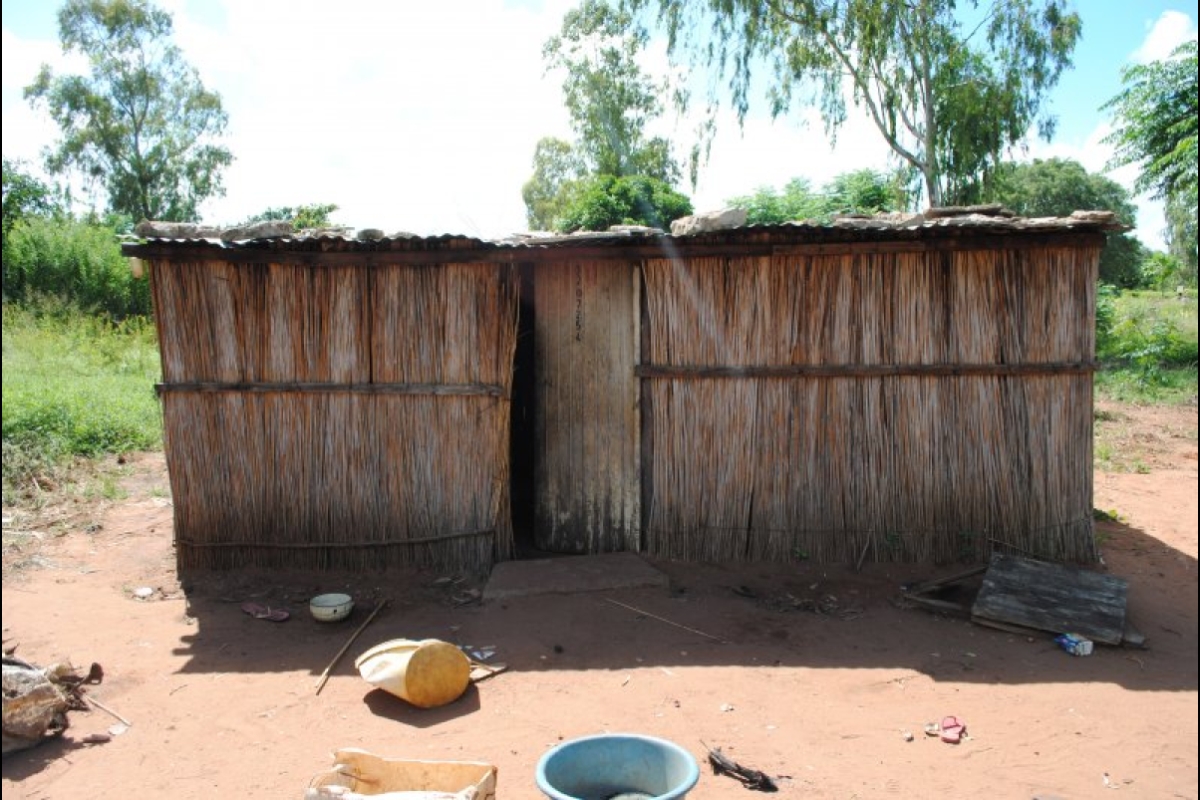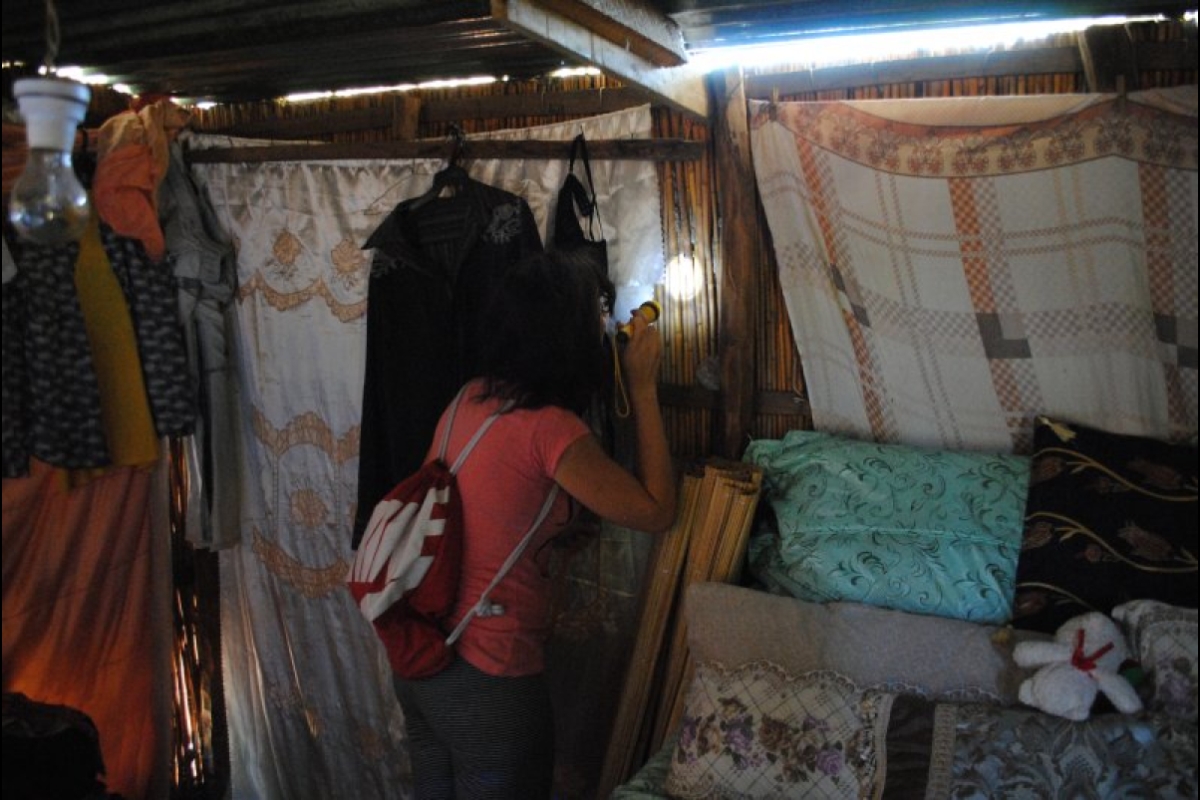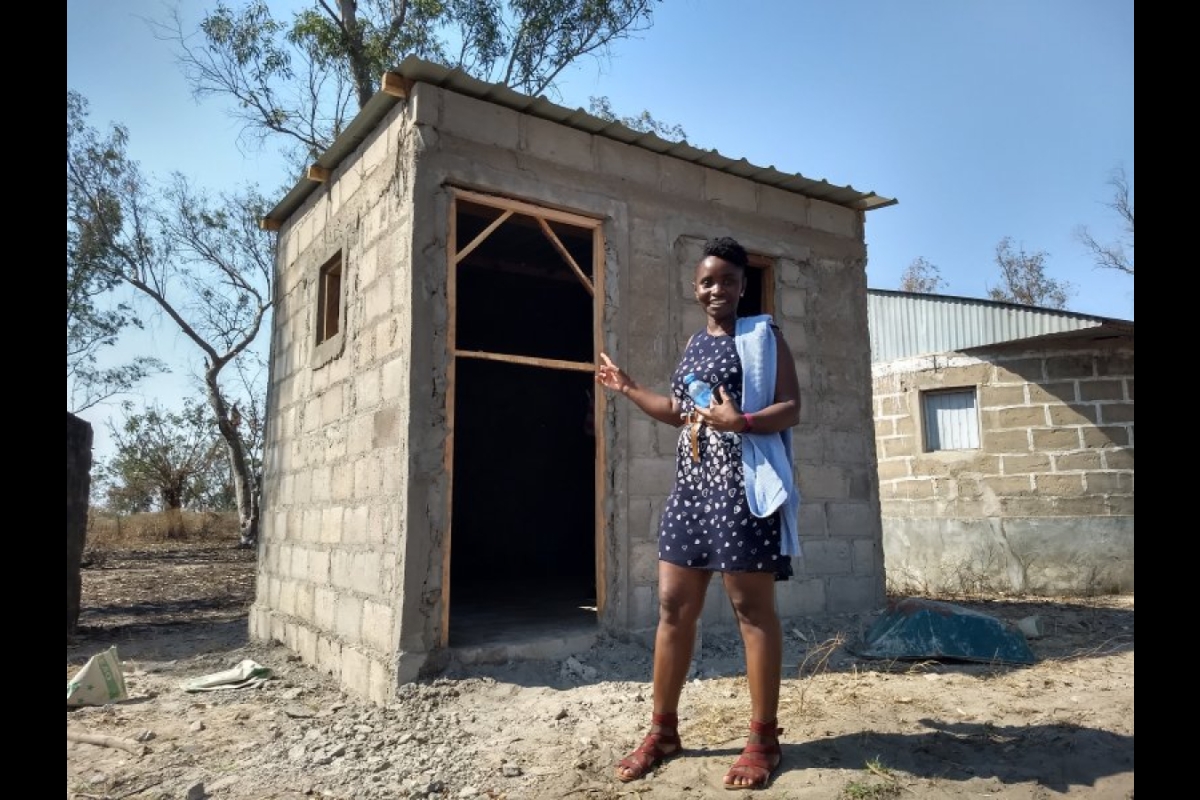New study improves understanding of malaria-prevention effectiveness

Malaria is spread to people through the bites of infected female Anopheles mosquitoes. Photo courtesy of Krijn Paaijmans
World Malaria Day is April 25. According to the World Health Organization, nearly half of the world’s population was at risk of malaria in 2020 — with an estimated 241 million cases and 627,000 deaths worldwide.
While this life-threatening disease is preventable and treatable, and effective measures continue to make a significant impact, emerging resistance to insecticides among mosquitos threatens progress in global malaria control, and increasing our understanding of factors affecting treatment efficacy is essential.
In a new study published this week in PLOS Global Public Health, corresponding author Krijn Paaijmans and his colleagues reveal an all-too-often overlooked factor impacting indoor residual spraying — the likelihood that treated walls are modified by household residents after treatment.
Paaijmans is an assistant professor in the Center for Evolution and Medicine in Arizona State University’s School of Life Sciences, as well as an associate faculty in the Biodesign Center for Immunotherapy, Vaccines and Virotherapy. He joined researchers from around the world to conduct a mechanistic study of malaria vector-control interventions in households in Mozambique.
The study shows that day-to-day household practices and additional construction after in-home insecticide treatments can reduce their effectiveness over time. This new understanding could help regions adjust their vector-control strategies to improve their success rates in the essential, ongoing fight against malaria transmission.
Strategy and challenges
Malaria is a life-threatening disease caused by Plasmodium parasites, which are spread to people through the bites of infected female Anopheles mosquitoes.
An acute febrile illness, the first symptoms of fever, headache and chills usually appear between 10 and 15 days after infection. While they can seem mild at first, untreated infections by the deadliest of the parasites can escalate to severe illness and death within just 24 hours.
Six countries account for more than half of all malaria cases worldwide: Nigeria, the Democratic Republic of the Congo, Uganda, Ivory Coast, Niger and Mozambique.
To effectively battle, control and eliminate malaria transmission, countries such as Mozambique use strategies called vector control. This approach primarily involves the wide-scale implementation of two key complementary interventions — indoor residual spraying of pesticides (IRS) and long-lasting insecticide-treated nets (LLINs).
These methods, especially when combined with improved health care and increased tracking techniques, are highly effective, and although significant reductions have been observed over the past two decades, progress has stalled in recent years.
Experts consider very carefully where, when and how to deploy IRS treatments, to help mitigate the increasing challenge of insecticide resistance and best serve the ongoing goal of decreasing malaria transmission.
However, of the many factors related to indoor residual spraying, one aspect that has not been thoroughly examined is arguably the hardest to predict — simple human behavior.
People living in households frequently take actions that modify the interiors and walls of their homes — washing, painting, re-plastering, adding wall hangings and decorations, and even expanding their households by building entirely new rooms.
"We often overlook an important factor: the acceptability of vector-control interventions by individuals, families or communities,” said Paaijmans. “We currently do not know how common wall modifications are after the implementation of IRS, but if we do not study this behavior in more detail, we will never be able to estimate the true protection that is provided by IRS."
To help gain a better understanding of the impact of these inevitable day-to-day activities and changes, Paaijmans joined researchers from around the world to carefully monitor households in two different Mozambique districts after an IRS treatment was deployed.
Assessment and understanding
Some 590 households in eight sub-villages in Matutuine and Boane districts in Maputo Province, in southern Mozambique, were surveyed for six months after IRS treatment to measure how human activities could change the assumed protection efficacy of IRS across a community over time.
Homeowners and household members answered questions about activities and projects conducted in the homes, modifications to walls and rooms, newly constructed rooms, the use of long-lasting insecticide-treated nets, and their opinions about vector-control tools.
Researchers found that most of the households, about 94%, reported activities that modified their walls. In the modified rooms, at least 25% of the wall surfaces were affected.
Additionally, a total of 99 new rooms were built — 84 in Matutuine and 15 in Boane. New rooms introduce untreated surface areas, posing a clear threat to prevention techniques.
Researchers used the data they collected along with known frameworks and parameters to estimate mosquito activity and intervention strategies to quantify how all of these factors came together in an updated assessment of the protection success rates of IRS treatments.
Based on their findings, Paaijmans and his colleagues estimate that the coverage efficiency of the IRS treatments in Matutuine was significantly reduced — from 97% to only 39%. The Boane district saw a less drastic reduction, from 96% to 91%.
Respectively, these results translate to a 43% and 5.8% increase in daily mosquito bites per person.
The results of this study certainly reflect the wide differences that can be present between communities and countries — each with its own distinctive factors and needs — and as such, these numbers cannot be globally generalized. However, the study results also clearly show the benefit to be gained from considering a wider window surrounding IRS applications.
Current practice when implementing IRS includes monitoring household modifications and activity directly before and after treatments are applied. By applying the new data collected in this study to widen time windows and continue to study human factors in high-risk areas, we can help improve the efficacy of IRS interventions and our ongoing assessment of the results.
More Science and technology

4 ASU researchers named senior members of the National Academy of Inventors
The National Academy of Inventors recently named four Arizona State University researchers as senior members to the prestigious…

Transforming Arizona’s highways for a smoother drive
Imagine you’re driving down a smooth stretch of road. Your tires have firm traction. There are no potholes you need to swerve to…

The Sun Devil who revolutionized kitty litter
If you have a cat, there’s a good chance you’re benefiting from the work of an Arizona State University alumna. In honor of…





